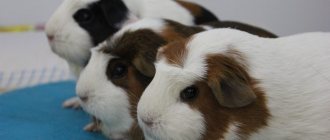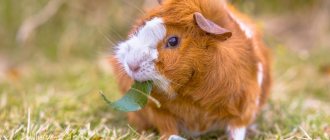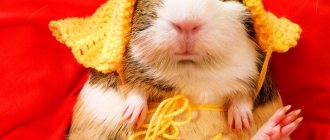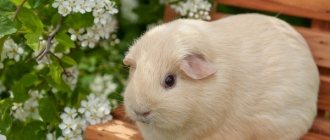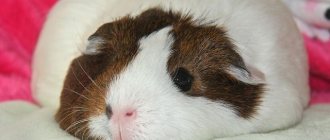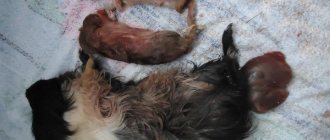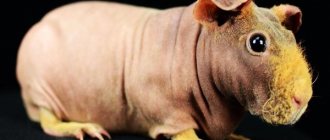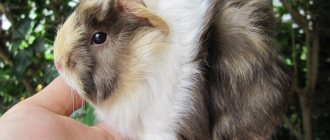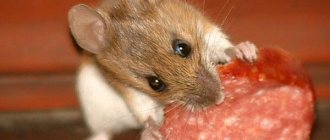Pet lovers try to diversify the diet of their pets. However, it happens that such care leads to sad consequences. Small pet rodents are at high risk of food poisoning. Often children try to feed them what they eat themselves. Adults also like to experiment - and not always successfully.
Potatoes are considered a popular and affordable food for animals. In raw and cooked form, it is widely used in animal husbandry. Many guinea pigs and hamsters love the vegetable in any form. But it is not suitable for everyone due to the physiological characteristics of the body.
What to avoid
When feeding plant foods, you should not exceed the permissible limits.
This refers to excessive consumption of sweet fruits. So, an abundance of apples and grapes in the diet can cause an upset stomach in a guinea pig. An excess of cabbage (white cabbage, Chinese cabbage, broccoli and other cruciferous plants) creates problems in gas formation in the digestive tract. Unripe or, conversely, overripe vegetables and fruits should be excluded from the diet. They are unconditionally excluded if the slightest initial signs of decay are detected.
Following these simple rules will help maintain the necessary balance of nutrients in the pig’s body. This means that the animal will grow up healthy, active and delight all household members with its love of life!
Final Recommendations
The decision on the advisability of introducing potatoes into the pet’s diet remains with the owner. Sprouted or green tubers are strictly excluded.
Raw potatoes should first be offered in microscopic doses. After your pet has eaten a piece, you need to closely monitor its well-being for several days. If the reaction to the vegetable is normal, then it is possible to increase the amount of potatoes to 20% of the daily menu.
Experts recommend mixing the pieces with other hard vegetables, which allow the animals to wear down their incisors. For older guinea pigs, potatoes should be boiled - their teeth are no longer able to process a raw tuber, even finely chopped ones.
Feeding guinea pigs: to give potatoes or not to give? ¶
From: bagrusha_mail - November 1, 2006 16:32
Other reasons why guinea pigs may smell
As it turned out, if your pet smells strongly of urine, you should clean his home more often. But what to do if, despite proper maintenance, an unpleasant odor is still present? There are several other reasons worth considering.
Nutrition
Feeding large quantities of cabbage, tomatoes, cucumbers, pears, radishes can cause diarrhea, bloating and a corresponding stench. Small portions of these foods do not cause digestive problems. From radishes, the tops are suitable for nutrition, not the root crop. Hay with the addition of cilantro, mint, parsley or dandelion will diversify your pet's diet and add a pleasant aroma to the cage.
To prevent your guinea pig from stinking, you should not give it a lot of cabbage.
Hormonal changes
The natural scent of males is slightly stronger than that of females during courtship. Giving birth in females may temporarily cause a slight peculiar odor.
Diseases
If, while maintaining cleanliness in the home, your pet begins to smell bad, you need to carefully examine it. The smell of rot appears with weeping eczema and pododermatitis. The cause of the stench may be other skin diseases, fungus, ear or subcutaneous mites and other diseases. Do not put off visiting a veterinarian.
We hope that what you read will convince you of purchasing such wonderful pets. Keep your pets clean, take care of their health, and no one will be able to tell you that guinea pigs are smelly!
We recommend that you read the information in the articles “How to identify and treat guinea pig allergies” and “Pros and cons of guinea pigs.”
>Video: Do guinea pigs smell or where does the unpleasant smell come from?
Do guinea pigs stink, possible reasons for the unpleasant odor 5 (100%) 1 vote
Diet
Depends on the physiological state. So, adult animals are always fed in the morning and evening at the same time. For pregnant pigs, feed is increased to 4 times a day.
It is important to understand that a hunger strike is unacceptable for rodents, as is a sudden change in diet. Any new product is introduced gradually and in small doses
Overeating also has a negative effect - diseases of the intestinal tract and obesity will be ensured.
An approximate diet of what guinea pigs eat per day is presented in the tables.
Possible diet depending on the time of year (per day)
| Type of feed | Winter | Spring | Summer | Autumn |
| Vegetables, city | 100 | 100 | 100 | 100 |
| Root vegetables, | 30 | 30 | 20 | 20 |
| Fresh greens, | — | — | 300 | 300 |
| Seno, city | 10-20 | 10-20 | — | — |
| Bread, Mr. | 20-30 | 20-30 | 10-20 | 10-20 |
| Grain, city | 40 | 40 | 30-40 | 30-40 |
| Milk, ml. | 20 | 20 | 20 | 20 |
Nutrition for young and adult guinea pigs (daily ration)
| Adults | Young | |
| Grain, city | 30-40 | 20 |
| Bran, Mr. | 15 | 10 |
| Seno, city | 60 | 30-40 |
| Green, city | 500 | 200-300 |
| Root vegetables, | 100 | 50 |
| Milk, ml. | 15 | 5-10 |
If you answer the question of which food is better, then experts do not have a common opinion on this matter. Many are inclined to think that this is oat bran, carrots and beets, as well as hay in winter or grass in summer. Other professional breeders are not against constantly feeding animals with high-quality and well-balanced factory-made feed.
Melon
The same goes for melon. This vegetable is given from your own garden or purchased in season. It is also not recommended to give melon frequently; it is very sweet and can contribute to the development of diabetes.
We tried to consider in as much detail as possible and give answers to the question “What vegetables can guinea pigs eat?” As you can see, most vegetables are not only possible, but also should be given to guinea pigs. The most important thing is a properly formulated and balanced diet for your pet, including products grown without chemicals. To keep your guinea pig healthy and cheerful, stick to proper nutrition and your pet will thank you with its playful behavior and healthy appearance.
Can a guinea pig have an apple?
Every guinea pig loves to eat delicious food. But their taste is different than ours. Therefore, you need to consider what you offer. For example, oranges and milk are contraindicated for them, but for us they are the norm. First of all, you need to remember that the animal is a herbivore. That is why it requires appropriate nutrition. But can a guinea pig have an apple?
Apples are a traditional dish for pets, along with tomatoes, pears and cucumbers. The variety doesn't really matter, the pet will eat everything. But try to take into account the amount of sugar in the fruit, since you cannot give too much sweets. In general, you can include both fresh and dried apples in your diet.
Apples are included in the guinea pig's diet before the show. They are fed in the evening along with greens, cucumbers, cauliflower and beets. This helps improve your appearance.
Surely every owner understands the peculiarity of his furry, which vitally needs vitamin C. And it is contained in the following products:
- Carrot;
- Cucumbers;
- Apples;
- Black currant;
- Cabbage (cauliflower, white, red);
- Lemon.
Citrus fruits are strictly prohibited. The lemon mentioned above is served as follows. A few drops are squeezed out and added to the drinking bowl. Thus, the body receives the required dose of nutrients and does not cause harm due to high acidity.
By the way, a pig can eat a whole apple on its own. This refers to the incisor teeth, which she uses to bite off a piece, which she then gnaws on. So one piece at a time and there is no fruit, it would seem, such a voluminous product. But you shouldn’t do this, it’s better to cut it into several parts and give no more than 1/4.
To understand the effect of this fruit on the animal, let's understand the nutritional value. Sugar in fruit form is only 16%. Vitamins K, B1, B2, B3, B6, E, PP, P, as well as iron, potassium, calcium and sodium have a positive effect on the entire body.
Before giving it in dried form, it is better to soak it in water for 2-3 hours.
It is important to carefully monitor the freshness; if signs of spoilage are detected, it is better to give the guinea pig another apple.
Those who want to tame a pig also enjoy the delicacy. This is known to be done with your favorite food. Apples and pears are often offered. Fillet should not be overused.
Features of fodder potatoes for livestock
Potatoes grown for livestock feed are called fodder potatoes.
These varieties have a higher amount of protein, but have a less pronounced taste. It has a beneficial effect on the body of animals and increases their productivity. The fodder crop is distinguished by:
- high productivity;
- high nutrient content;
- short ripening periods.
Fodder tubers are usually 2-3 times larger than table tubers. They often have an irregular shape and taste bland and watery. They get very soft when cooked.
Advantages of fodder tubers:
- high starch content - it is well absorbed;
- high amount of protein - animals grow quickly;
- a complete set of nutrients - other crops that are grown for food do not have such nutritional value;
- high yields.
Flaws:
- during long-term storage, beneficial properties decrease;
- If storage conditions are not met, they turn green and form a toxic substance - solanine.
For long-term storage, silage technology is used - the tubers are acidified with organic acids, which are formed during the fermentation of sugars.
Can guinea pigs eat radish tops?
Radish castings will be much more useful than the root itself. They do not contain as many essential oils, so they are easily digested. The tops also contain a lot of useful vitamin C, so regular consumption of the leaves will have a positive effect on your pet’s health.
Radish tops are rich in vitamin C
The following recommendations are made for proper feeding of radish tops:
- Only fresh, recently picked tops can be added to the feed;
- wilted or damaged leaves should not be used;
- You can add tops to the menu no more than once a week. The rest of the time the animal should eat its usual food;
- It is better to completely remove the remaining tops immediately after feeding;
- The daily norm is 15 g.
Vegetables
Can guinea pigs have radishes?
It is permissible to use only radish tops. The root vegetable contains essential oils that can cause irritation to the mucous membranes and respiratory tract of the animal. The vegetable also causes bloating. Therefore, it is not recommended to give radishes to pigs.
Can guinea pigs eat celery?
Celery can be given in any form - stems, leaves, roots. This vegetable is included in many dry food for rodents. Celery is enriched with vitamins B, PP, E, C, A and contains phosphorus, zinc, potassium, calcium, iron and magnesium. Before eating, celery must be washed thoroughly, especially the root.
Can guinea pigs eat tomatoes?
Ripe fruits can be included in the food. Tomatoes are well absorbed by animals and contain vitamin C and carotene, which are beneficial for their body. Green tomatoes contain solanine, which can negatively affect your pet’s health.
Too many tomatoes in an animal's menu can cause loose stools.
Can guinea pigs eat cabbage?
Cabbage can be included in the animal's diet. Cabbage contains many vitamins and other substances necessary for pigs:
- ascorbic acid;
- B vitamins;
- vitamins of the PP group;
- folic acid;
- sulfur;
- calcium;
- potassium;
- phosphorus;
- amino acids;
- microelements.
The vegetable is able to keep the animal’s fur in excellent condition and strengthen its immunity. The top dried leaves should be given. It is preferable to feed guinea pigs Chinese cabbage and broccoli. White cabbage can cause bloating.
Can guinea pigs eat potatoes?
Green and sprouted potatoes are contraindicated for guinea pigs. Raw vegetables can be given occasionally, cut into small pieces. Boiled potatoes can be offered to your pet separately or added to grains and other foods.
The vegetable contains solanine, which can harm the health of the animal if the pet eats too many potatoes. The pig will become passive and catch cold quickly.
Can guinea pigs eat beets?
Beetroot contains many substances useful for animals: vitamins C, A and B, potassium, magnesium, phosphorus, iron. In excess, the vegetable contains fiber, so it acts on the animal’s body as a laxative. Store-bought root vegetables may contain nitrates, which are very harmful to the small body of guinea pigs. It is better to offer your pet homemade crops. The composition also contains a large amount of oxalic acid, so it is better to limit the consumption of this product.
It is recommended to give beets starting from 2 months; they are especially useful in winter and spring, when there are no fresh vegetables. The daily dose should not exceed 200 g, and it is better to exclude beets from the diet of pregnant and lactating pigs so as not to provoke an upset stomach. Beets turn stool and urine red, so if your animal has eaten them, don’t be alarmed by such changes.
Can guinea pigs eat pumpkin?
Pigs can be given all varieties of pumpkin that humans eat. For the digestion of herbivorous animals, such a product will be familiar and useful. Pumpkin contains vitamin C, calcium and phosphorus necessary for rodents. It should be borne in mind that this low-calorie vegetable will not be able to saturate the pig completely, so it is better to give pumpkin to guinea pigs as a treat.
Can guinea pigs eat bell pepper?
Another storehouse of ascorbic acid is bell pepper. Before use, the vegetable must be thoroughly washed and chopped, and the seeds removed. It is better to give the product together with dry food.
Green peppers containing solanine should not be given to animals, as should peppers in the form of hot seasonings. Spicy foods will damage the mucous membranes.
Can guinea pigs eat cucumber?
Cucumbers don't have as many nutrients as other vegetables. You can offer your pet a cucumber. The vegetable can harm your pet's health by causing digestive problems only if consumed in large quantities.
Can guinea pigs eat zucchini?
Zucchini is suitable for the diet of guinea pigs. They contain small amounts of vitamin C, calcium and phosphorus. It is better to prefer young vegetables; they can be given along with the peel, cut into crowbars.
Rose hip
Rosehip is a rich vitamin and mineral complex. It contains vitamins C, E, PP, B1 and B2, minerals - calcium, manganese, potassium, magnesium, sodium, phosphorus, zinc, copper and iron. Guinea pigs can eat berries, flowers and rosehip leaves. Rose hips can be given to your pig fresh or dry, but the fuzzy seeds must be removed before feeding. Rosehip is very useful for a pet, as it strengthens the immune system, improves digestion, calms, restores the animal’s strength after illness or pregnancy, helps against atherosclerosis, with abdominal pain, and with the healing of wounds and cracks in bones. Guinea pigs can also be given rosehip infusion into their drinking bowl.
Catering
To understand what to feed a guinea pig at home, you need to familiarize yourself with the physiological characteristics of this rodent. His body is structured differently from that of a human. The main difference is that intestinal motility in a rodent is much weaker than in humans. Accordingly, most foods that are palatable to humans simply cannot be given to rodents.
To properly feed your furry friend, think about what he eats in the wild. The diet of a domesticated rodent should not differ radically from the diet of a rodent that lives in the wild. And in the wild it feeds on various plants, grains, hay, roots, and some fruits and vegetables.
When preparing a diet for your pet, you should take into account the individual characteristics of the animals, each of which has its own preferences. Some rodents love apples, while others prefer carrots, some like succulent food, while others like hay.
This does not mean that you need to feed your pet only the foods that he likes. The diet should be well thought out and balanced. But, if possible, give preference to those products that the rodent likes. Also take into account that along with his favorite food, it is advisable to feed your ward food that he does not like, but which should be present in the diet.
Diet
Before moving directly to the description of permitted and prohibited foods, let’s make a reservation about how many times a day to feed a guinea pig. Rodents need to be fed often, but little by little. It is advisable to fill your pet's feeders 4 times a day. It is advisable to feed your ward at the same time. You should not put in a lot of food, since the small fluffy rodent is prone to stockpiling. Accordingly, the pet will try to hide food that the pet does not eat. Make sure that nothing is left in the feeders after feeding.
If you give fruits or vegetables, then after feeding, remove all the leftovers, and take the time to wash the feeders. If you do not properly care for your pet, and keeping the dishes clean is also part of the care, then your pet will certainly have stomach upsets caused by sour food. Rodent feeders should be washed without using detergents.
If you introduce a new product into your diet, do it carefully. Rodents are very sensitive to changes in food. When giving any product for the first time, observe your pet. If he shows signs of gastrointestinal dysfunction, immediately eliminate the new product from the diet.
Are there differences depending on breed?
The bodies of guinea pigs are all identical, regardless of species and breed. So a banana will benefit every animal
It is only important to separate the fruit from the peel and give it in limited quantities
Do not forget that sweets have a bad effect not only on human health, but also on all living beings.
It is extremely important to take this into account when feeding your guinea pig such treats. Since the fruit is a storehouse of nutrients and vitamins, but also sweet, it should be given strictly in accordance with the dosage. This will help not harm your pet's health.
This will help not harm your pet's health.
This fruit should not be given to babies who have not yet reached three months of age.
And only after this age limit can bananas be introduced into the rodent’s diet. It is advisable to start complementary feeding with a small piece once a day. 1/6 of the fruit is enough.
After the first dose, it is important to monitor the guinea pig’s reaction. If no changes occur within 24 hours, then the fruit can be given regularly, gradually increasing the dosage. Adults are treated daily with an amount of treat that does not exceed ¼ the size of the fetus
Adults are treated daily with an amount of treats that does not exceed ¼ the size of the fetus.
Banana is also useful for guinea pigs that have reached “retirement” age. It will not only saturate the animal’s body with the missing elements, but will also allow it to spend less energy on eating food. The animal no longer has the strength it used to have, and it is difficult for it to chew hard grain. Therefore, he will like a soft banana.
Animals, like people, can suffer from overeating. The stomach is not always able to process excess amounts of food, which negatively affects the pet’s condition. And excessive consumption of sweets does not have the best effect on health.
Should I give my pets kiwi?
Do not forget that the product given to the rodent must be of high quality. This will protect your pet from poisoning and diarrhea. In addition, banana is considered an astringent product.
An excessive amount of such treats will not allow the animal to go to the toilet in a timely manner. And irregular bowel movements and retained excrement in the body have a negative impact.
Overeating and poor-quality products harm the animal
It is important to remember that it is important to approach your pet’s nutrition as responsibly as you do your own.
How to choose a guinea pig
It is better to purchase a guinea pig from a breeder with a good reputation. People who professionally breed rodents value their name and will not deceive customers.
First of all, you need to decide on the choice of breed. There are short-haired, long-haired and hairless guinea pigs.
- The first group includes breeds - satin, crested, rosette, teddy, crested, self, Dutch and others.
- Longhaired - Sheltie, Peruvian, Angora, Merino, Texel, Alpaca, Cornet.
- Hairless - Baldwin and Skinny.
A guinea pig costs about 2,000 rubles. Rare breeds and animals with unusual colors will cost more – up to 3,500 rubles.
To choose the right pet, you should look not only at appearance. The main thing is to buy a healthy animal. In what cases should you refuse a purchase:
- if your guinea pig has a runny nose;
- red, swollen, watery eyes;
- the animal is lethargic;
- the coat looks unkempt and disheveled;
- wet or dirty under the tail;
- the guinea pig is breathing heavily, wheezing, sneezing;
- there are scratches or bald spots on the body.
Such symptoms should alert the buyer. They indicate the animal’s poor health.
Green food
This food must be given to your guinea pig, but you need to know what kind of greens you need to give your pet. The main herb is fresh grass from fields and meadows with medicinal and spicy herbs. You shouldn’t tear up greenery at the edge of the road, as many cars pass by and exhaust gases settle on the grass. It is not recommended to collect grass under trees either; birds like to sit on trees, and their droppings cause rotting of the greenery. Pigs love grass, it helps them always stay healthy. Greens contain many vitamins. Greenery includes not only field grass, but also that which a person eats. These animals love to eat: spinach, the stem and greens of dill, parsley, it’s worth giving a little, and lettuce and other greens.
Other products
Can guinea pigs eat bread? It's better not to give.
- Fresh yeast bread takes a long time to digest and causes fermentation in the animal’s stomach.
- White bread causes bloating.
- Your pet can eat stale bread, but not often.
- Dried bread with seeds, sesame seeds and raisins can sometimes be offered to your pet as a treat.
Can guinea pigs eat nuts and seeds?
Nuts and seeds are among the allowed foods, but can cause obesity if their consumption is not limited. It is better to offer your pet almonds, walnuts or hazelnuts.
The seeds contain many components useful for the animal: fatty acids, calcium, sodium, phosphorus, proteins and vitamins. It is better to give peeled seeds and make sure that they are no more than 15% of the total feed.
What are the consequences of violating the nutritional rules?
According to statistics, pigs most often die due to intestinal disorders. With improper feeding, the microbial balance in the digestive tube is disrupted, the breakdown of cellulose is difficult, food is not properly digested, and death occurs from intoxication with metabolic products
This is why it is so important to monitor your diet and feeding regimen.
Feed must be of good quality and fresh, it must smell good and have no signs of spoilage or mold damage.
It is important that products are stored in places inaccessible to insects and wild rodents - carriers of dangerous diseases
Factors that provoke diarrhea
Diarrhea can occur from intestinal disorders or is a concomitant symptom of the disease. Diarrhea in a pet can be a result of:
- bacterial infection;
- the presence of worms;
- dental pathologies;
- fungal infections;
- nervous stress;
- colds;
- dysbacteriosis;
- consumption of poor-quality drink and food.
It should be noted that even diarrhea that occurs after eating spoiled food can be fatal. The dehydration that accompanies this disorder poses a great danger to the guinea pig. Therefore, it is necessary to show the animal to a veterinarian immediately.
Sometimes pet owners experience anxiety and panic without reason when the consistency of excrement changes. Normal stool looks like hard granules. If it is soft and unformed, this is not necessarily a sign of disease. This may be a consequence of eating juicy foods that soften the stool. But if diarrhea and mucus appear, you need to take action immediately.
What vitamins and minerals are needed
Guinea pigs' diet must contain vitamin C in the amount of 5-25 mg per day. In nature, they get it from herbs, but it is not a fact that store-bought products will contain the vitamin in the required quantities. Therefore, we buy it separately and feed it with the vitamin, adding it to food or dripping it from a dispenser into the mouth.
Vitamins B and K, also necessary for a pet, are not immediately absorbed by the rodent’s body. That is why they often eat their excrement - useful substances are extracted when they pass through the intestinal tract again. If you see this, don’t worry, everything is fine with your animal. It is not necessary to feed these vitamins separately.
Another essential substance is salt. On average, an adult needs about 5 g per day. You can “kill two birds with one stone” and buy a mineral stone for grinding teeth that contains salt (you still need to grind it down, Cavy’s teeth grow throughout their lives).
If you decide to go with twigs instead of stone, be sure to add salt to your diet. What twigs can you give to a guinea pig? The most preferred are apple or pear. Currants, maples, and birches are also suitable. Never give your pet branches of oak (due to tannins) and coniferous trees (too much resin).
Buy branches of fruit trees - you need to grind down the teeth.
Hay
Due to the special structure of the gastrointestinal tract, the nutrition of guinea pigs must be organized so that they can eat hay every day. This is their favorite food, which stimulates the digestive system and prevents the occurrence of intestinal diseases. You can purchase it at a pet store or prepare it yourself.
You need to carefully ensure that the hay that guinea pigs eat does not contain large, coarse twigs, dust or other contaminants.
If you wish, you can feed the animals with your own prepared hay. It is recommended to collect raw materials for it away from swamps, highways and industrial enterprises. You need to dry the grass for the winter for at least 1.5-2 months, and it should not turn black or turn black.
What food is prohibited
Guinea pigs are not carnivores, they do not drink milk or eat meat products, they are true vegans.
When thinking about what to feed your pet at home, do not give him:
- porridge;
- dairy products, cheese and cottage cheese;
- meat and fish products;
- vegetable stew;
- eggplant;
- raw potatoes;
- night blindness;
- fern;
- sow thistle;
- wild rosemary;
- celandine;
- fighter.
You also shouldn’t give overripe or unripe fruits, vegetables, damp grains, old mixed feed; you also shouldn’t feed the rodent what you eat yourself every day. Do not give a lot of sorrel to your pet, it is not prohibited, but in small quantities.
The option is to give the animal store-bought food a couple of times a day, this is of course also an option, but how correct is it to feed the pig only this. This is suitable if the animal is not yours, and you were simply asked to look after the pet. But this is not the best option if you purposefully got yourself this pet. You should not care about the health and condition of your pet or how long your friend will live.
Seasonal daily feeding rates
Fresh vegetables and fruits are included in the guinea pigs' menu year-round. Therefore, you should decide on specific food products and adhere to daily feeding norms at different times of the year. In this case, the specific gravity of the components is determined taking into account the needs, the established personal preferences of the animal, the advice of veterinarians, and, above all:
- Pet's age.
- Health conditions, including pregnancy.
- Temperament (activity) of the rodent.
Nutrition depends on many factors, such as the age and activity of the rodent
Approximate proportions of adult nutrition for these domestic rodents (by season) - see table.
Can hamsters be given potatoes?
Veterinarians and pet experts have conflicting opinions on whether hamsters can be given potatoes. It all depends on the individual physiological characteristics of each animal.
If it is well tolerated, there are no digestive system disorders, or signs of deterioration in health, the vegetable is included in the rodent’s diet in small quantities.
Raw
The hamster, as a representative of rodents, eats raw vegetables and fruits in nature. A pet is no exception, so hamsters will benefit from raw potatoes.
If there is a lack of vitamin C, the vegetable helps fight vitamin deficiency, and fast-growing teeth wear down better on raw tubers.
Boiled
It is recommended to include boiled vegetables in the diet of hamsters. They are easier to digest, especially by older individuals.
Attention! The vegetable is boiled without salt. Boiled vegetables contain a large amount of starch, which leads to excess weight gain
Excess weight has a bad effect on heart function in rodents, and general health worsens. Therefore, this product should not be given daily.
Boiled vegetables contain a large amount of starch, which leads to excess weight gain. Excess weight has a bad effect on heart function in rodents, and general health worsens. Therefore, this product should not be given daily.
How to choose the right mating partner
Here's how to choose the right partner for mating:
The best age for a male is from eight months to a year. It’s better not to let old “pigs” into breeding.
It is very desirable that the “groom” belongs to the same breed or at least variety. In this case, there will be much fewer problems with childbirth and pregnancy.
The optimal weight is from 0.7 to 1 kg. The female, by the way, should weigh about the same. The animal should be neither obese nor emaciated.
https://www.youtube.com/watch?v=GsW_Y5o5aZM
Finally, the pet must be completely healthy. To make sure of this, it is advisable to have the “bride and groom” examined by a veterinarian.
It is highly desirable that the animals be approximately the same in character. Two fighters can seriously damage each other’s skins; if you pit a melancholic and active pet, normal mating will not work either.
Can an animal exist only with its owner?
To figure out whether a pet can live alone, you need to consider its behavior in the wild. In their natural environment, animals live in groups. They live together, hide from adversity, take care of each other. In the company they feel safe and happy. Therefore, the statement that a guinea pig can live alone is a misconception.
Most owners say that the pet experiences happiness from the presence of the owner and playing together. If a rodent feels good next to its owner, this does not mean that he does not want a friend to live nearby who will lie with him, eat and clean his fur. And we must not forget that the owner does not have the opportunity to constantly be near his pet.
Necessary for care
Like any other pet, a guinea pig requires a wide variety of grooming accessories. These include:
- cage or aquarium;
- feeder;
- sippy cup;
- house;
- filler;
- mineral stone;
- toys;
- carrying;
- hygiene products;
- brush-comb and nail clipper.
Cage or aquarium
Keeping a guinea pig is allowed both in an aquarium and in a cage. The main condition is size: the dwelling must be at least 50 cm in length and 30 cm in height so that the animal can move comfortably. If you have decided on a cage, then it is best to take a closer look at the options that have a plastic bottom. Plastic is quite easy to care for, it is easy to wash, dry, etc. A wooden base is not suitable due to the fact that these animals drink a lot of liquid per day, and therefore excrete a large amount of urine. The wood will simply become unusable in a very short time. You can purchase an aquarium in the above sizes. It, like a cage with a plastic bottom, is easy to wash and clean. But you should be careful, since glass is a very fragile material and when moving it, for example, to another room, you should follow safety rules (the pet should not be in the aquarium, it should be transferred to a carrier).
cell
Feeder
The feeder should be heavy enough so that the guinea pig cannot knock it over. An excellent option would be bowls made of ceramics, stainless steel, etc. It is also recommended to buy 2-3 containers. For example, one will be used for vegetables or fruits, and the second for dry food.
Sippy cup
A vertical ball sippy cup is perfect for a guinea pig. It is usually made of plastic with a metal tip. In such a drinking bowl there is no need to change the water daily, but this is done about 2-3 times a week.
House
Be sure to install a small house in the cage or aquarium. Your pet will sleep in it, relax, or simply retire when he wants to be alone. Most often, such houses are made of wood with a round “door” cut out in the middle. The most optimal size is 25 cm in length and 15 cm in height. This space is enough for the animal to hide and at the same time feel comfortable.
house
Filler
When arranging the cage, do not forget about the bedding. It will create comfort in the cage, prevent the animal from freezing and, to some extent, maintain cleanliness. You can use sawdust or ground corn cobs as a filler. Under no circumstances put cotton wool, newspaper, paper, etc. in the cage as bedding, as this is not safe for your pet’s health.
Mineral stone
To maintain dental health and calcium levels in your guinea pig's body, mineral stone is essential. After all, it serves not only as a vitamin complex, but also perfectly helps the animal grind its teeth. This stone is sold in a pet store, and its price is quite affordable.
stone
Toys
Guinea pigs are somewhat similar in behavior to decorative rabbits. They love to play. Therefore, be sure to buy some interesting and funny toy for your pet, for example, a tunnel, a hammock, a mirror, a rolling wheel, etc. The game will not only bring joy and pleasure to the animal, but will also strengthen muscles, and will also be an excellent preventive measure against obesity.
Carrying
If your plans did not include traveling together or any trips with your guinea pig, then you will still need a carrier. Transporting an animal in your arms, in a box or blanket is strictly prohibited. For example, you need to visit a veterinarian or transport the animal to another house or apartment; in such life situations, a carrier will definitely help you out. The pig will feel safe and the transportation process will go smoothly.
Hygiene products
Guinea pigs are considered clean animals, but sometimes they are still allowed to be bathed. For such cases, it is necessary to use special hygiene products that can be purchased at a pet store. The most popular of them:
- "Biogance" - bio-perfume;
- "Veda" - wheat shampoo.
